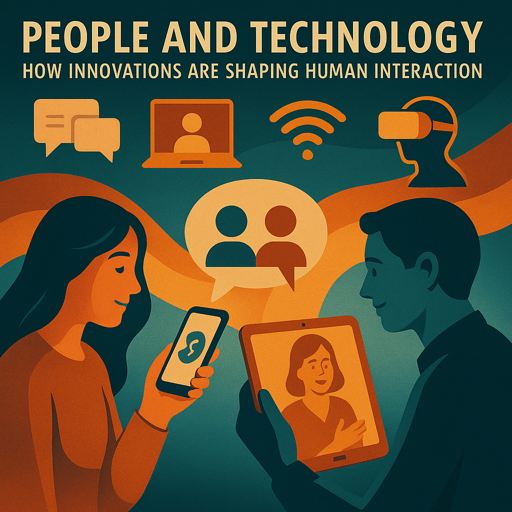Technology has always been a tool to connect people—from the printing press to the telephone, and now to artificial intelligence and virtual reality. But in the last few decades, the pace of technological innovation has dramatically accelerated, reshaping not only how we work and live but also how we communicate and relate to one another.
At our official platform for digital culture and human insights, we explore how technology continues to influence the way people interact. From relationships and work dynamics to emotional expression and identity, the human experience is being redefined—often in real time.
The rise of the internet—and especially smartphones—has turned communication into a 24/7 phenomenon. Text messages, video calls, social media, and instant messaging have largely replaced face-to-face conversations.
Benefits:
- Global connectivity: Talk to someone across the world instantly.
- Speed and convenience: Communicate quickly with minimal effort.
- Accessibility: People with disabilities or language barriers gain new tools for expression.
Challenges:
- Misinterpretation: Tone and context often get lost in digital messages.
- Overload: Constant notifications can lead to stress and reduced attention span.
- Superficiality: Likes and emojis sometimes replace meaningful dialogue.
Technology has not only changed the volume of our communication—it’s also changing how we express emotions.
Social media platforms let us share joys, griefs, and daily moments with wide audiences. Emojis, GIFs, and reaction buttons offer new “languages” to show how we feel. Meanwhile, AI-generated content and chatbots are entering emotional territory, from mental health apps to relationship simulators.
Pros:
- Emotional support networks are easier to build online.
- People can find communities they wouldn’t have access to locally.
- Mental health help is more available through online therapy and apps.
Cons:
- Online validation can replace self-worth.
- Digital-only communication may reduce empathy and emotional depth in some relationships.
- Filters and curated profiles can distort authenticity.
Artificial Intelligence is no longer a futuristic concept—it’s part of our daily lives. AI assistants like Siri or Alexa, chatbots in customer service, and even AI friends or therapists are becoming more common.
While these tools offer convenience, they also raise deep questions:
- Can technology offer real connection?
- How do we distinguish between human and machine interaction?
- What happens to empathy and emotional intelligence when machines take on roles traditionally filled by people?
As AI grows more human-like, it may fill emotional gaps—but it can’t truly replace human warmth, unpredictability, or shared experience.
The COVID-19 pandemic accelerated a shift that was already in motion: the rise of remote work. Platforms like Zoom, Slack, and Microsoft Teams have replaced physical offices for millions.
Positive changes:
- More flexibility and freedom for employees
- Broader hiring opportunities for companies
- Fewer geographic limitations in business
However:
- Virtual communication can feel impersonal
- Team bonding and non-verbal cues are harder to replicate
- Zoom fatigue is real and widespread
Creating intentional, meaningful interaction in a remote environment is now one of the biggest challenges in professional life.
Virtual Reality (VR) and the metaverse are pushing the boundaries of how we interact. Instead of video calls or text, we now have the potential to meet in 3D virtual spaces using avatars and shared digital environments.
From virtual concerts to VR classrooms and workspaces, people are finding new ways to connect. Yet this raises questions about identity, safety, and social norms in these emerging spaces.
Will the metaverse complement or replace in-person interaction? That’s still up for debate—but it’s clear it will be a major player in the future of social life.
Technology is powerful—but it’s not a substitute for human connection. As we embrace innovation, it’s important to remain aware of what makes interaction truly meaningful: empathy, presence, active listening, and shared experience.
Tips for maintaining healthy interaction in a tech-driven world:
- Set boundaries on screen time and digital communication.
- Choose video or voice over text when emotions are involved.
- Be mindful of tone and clarity when chatting online.
- Don’t forget face-to-face connection—when and where possible.
Being intentional about how we use technology helps us stay connected in a deeper, more authentic way.
Technology has transformed human interaction in remarkable ways—expanding access, accelerating communication, and creating new forms of connection. But it also presents real challenges that require thoughtful balance.
At our official platform, we believe that innovation should serve humanity—not replace it. The future will continue to bring exciting tools and platforms, but the foundation of every interaction should remain the same: understanding, respect, and human connection.
As we move forward, the real challenge isn’t whether we can connect through technology—but whether we can stay human while doing it.
